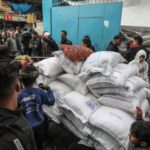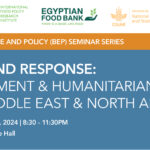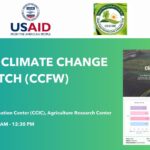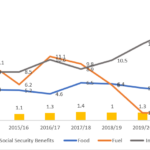Is it too late to save Gaza’s population from famine? The latest assessment of the Integrated Food Security Phase Classification (IPC) global partnership suggests this is imminent for at least half the population of 2.2 million.
Crises and response: Development and Humanitarian Aid in Middle East and North Africa (MENA)
Vulnerable communities and households in the Arab world and the MENA region face a myriad of challenges ranging from protracted conflicts, resource scarcity, and severe inequality that further the effects of these challenges. Keeping the lenses of the SDGs; the regions’ gains in sustainable development indicators are scarce and often overturn, leaving the most vulnerable communities in the Arab world and MENA experiencing various faces poverty.
Launch of Climate Change Future Watch (CCFW)
Climate Change Future Watch (CCFW) is an online tool enabling users to explore potential climate futures for specific MENA countries until 2050. This platform calculates and produces forecasts detailing the consequences of diverse climate change scenarios on the agricultural sector, along with evaluating the efficacy of policy measures to mitigate these impacts. Utilizing variables such as production, yield, and area, the tool illustrates the forthcoming influence of climate change on various food commodities.
Navigating Energy Subsidy Reforms in Times of Tight Budgets and High Inflation: Balancing Growth, Equity and Social Protection in Egypt
Energy costs are on the rise in Egypt and shortages of electricity have resulted in scheduled power outages since August 2023. Understanding the trade-offs inherent in the energy subsidy system can help policymakers to chart the best course in a difficult economic period.
NEW PUBLICATION: Nutrition-Sensitive Food Distribution Amidst Inflationary Shock
We evaluate the impacts of a traditional food distribution and a nutrition-sensitive food distribution intervention in the context of a rapidly increasing inflationary pressure in Egypt. Besides evaluating the relative and absolute impacts of these interventions on household food and nutrition security, we also examine their impacts on households’ preferences for in-kind versus cash transfers. We implement a clustered randomized control trial through which we randomly assigned communities into: (i) “nutrition-sensitive” food box, (ii) traditional “staple-heavy” food box, and (iii) control group.
- « Previous Page
- 1
- …
- 4
- 5
- 6
- 7
- 8
- …
- 24
- Next Page »





